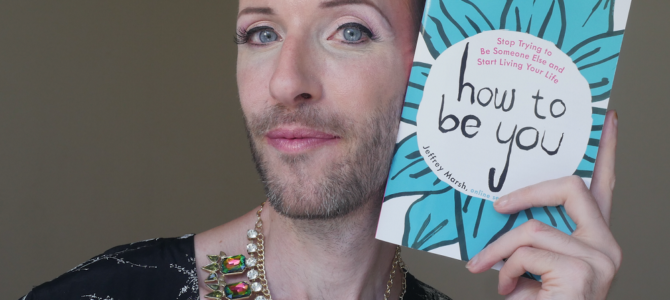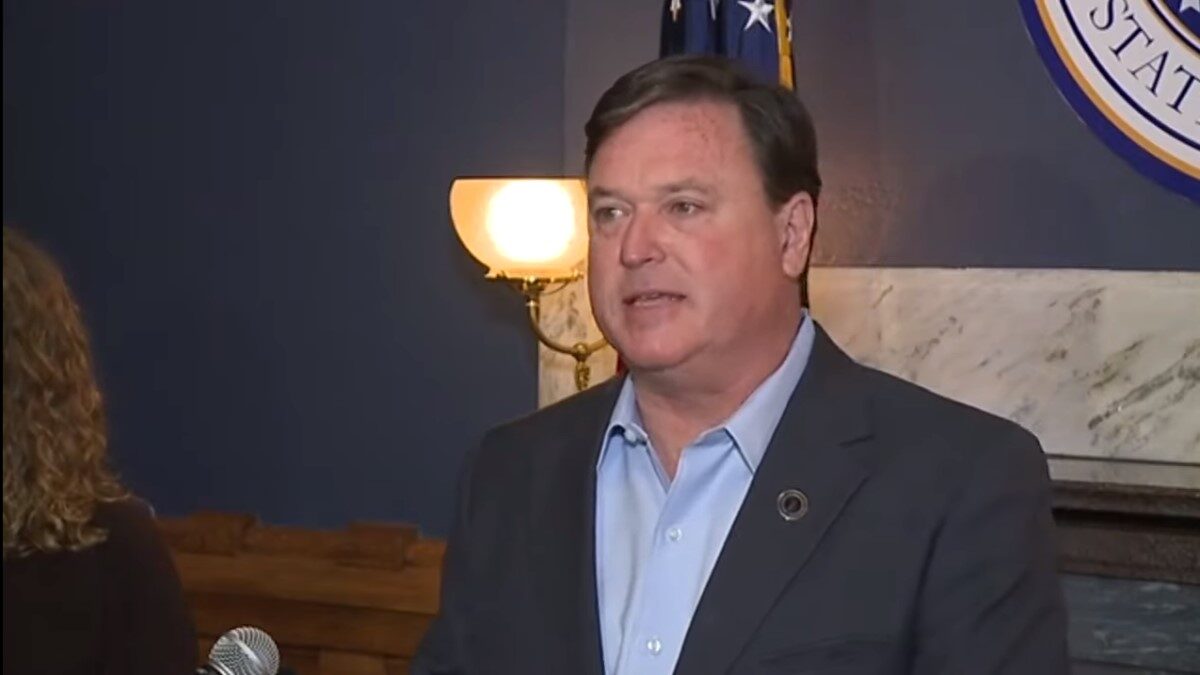
“Transgender boy wins right to transition before college” read the headlines last week after Hamilton County (OH) Juvenile Court Judge Sylvia Hendon awarded custody of a 17-year-old female (identifying as a transgender boy) to her grandparents.
To understand what is at stake in this complicated case, some background is in order. (While the case proceedings are not fully available, the judge’s February 16, 2018 decision is available here and provides some factual context, although the timeline is not completely clear from the court’s order.)
In 2016, the teen apparently was suffering from anxiety and depression severe enough that her parents sought inpatient treatment for her at Cincinnati Children’s Hospital Medical Center. Cincinnati Children’s, which boasts of its status as a leading center for the treatment of transgender youth, subsequently diagnosed the teen with gender dysphoria.
Up until the summer of 2016, the court noted, the child had “lived consistent with the assigned gender at birth” (female). After beginning care with Cincinnati Children’s, the child was diagnosed as transgender and within months the hospital recommended the teen begin hormone treatment. (Given that the teen was 16 at the time, the recommended hormones were likely cross-sex hormones, which would sterilize the child.)
Then Things Got Worse
By early 2017, family relations had frayed. The parents sought Christian counseling for the teen, who resisted and called a crisis hotline alleging, according to news reports, that one parent had told the teen to commit suicide. On February 8, 2017, the Hamilton County Department of Jobs and Family Services (HCJFS) sought interim custody of the teen but the parties agreed instead to allow the teen to continue living with the child’s maternal grandparents and to continue receiving therapy from Cincinnati Children’s.
By April 2017, according to the court, “the situation had deteriorated” and HCJFS obtained temporary custody of the teen. The parents, grandparents, and county agreed to work towards a “permanency goal” in which the teen would be under the grandparents’ care.
But with the teen under the county’s interim custody, Cincinnati Children’s stepped up pressure to begin hormonal therapy to affirm the girl’s masculine gender identity. The county filed “case plans” with the court stating that the hospital “‘would like’ to begin hormone therapy with the child pursuant to a treatment plan for the diagnosis of gender dysphoria.”
The parents objected and a magistrate’s hearing found no “emergency” that would warrant expedited approval, at which point the county withdrew the case plans and switched arguments. The county’s court filings sought to end its own interim custody and to “award legal custody to the maternal grandparents,” using the “best interests of the child standard.” The magistrate conducted evidentiary hearings and the grandparents petitioned for custody in December 2017. The court’s ruling on February 16, 2018 decided the matter, awarding custody to the grandparents.
The case is troubling for many reasons. It foreshadows the likely future in which minors will be granted the right, under state laws, to decide their own gender identity treatments, and it capitulates to the ideological narrative that children have “a legitimate right to pursue life with a different gender identity than the one assigned at birth.” Even so, the case is not a “slam dunk” validation of adolescent transgender transition—or gender experts either.
Judge Hendon Put Her Finger On Big Issues at Stake
Let’s look first at some big concerns the judge voiced. The judge describes “the entire field of gender identity and non-conforming gender treatment” as beset by “a surprising lack of definitive clinical study available to determine the success of different treatment modalities.” She’s right.
But the “sparse” research base hasn’t stopped gender “experts” from plunging ahead, promoting “gender-affirming” medical interventions for kids and creating new transgender programs at hospitals across the country. In the past five years, the number of U.S. gender clinics for children and adolescents has exploded, from just three to more than 41.
The court expressed “concern” that the Transgender Program at the Cincinnati Children’s Hospital deemed “100% of the patients…who present for care” to be “appropriate candidates for continued gender treatment.” Put differently, the judge seems suspicious that just as everything’s a nail to a person with a hammer, every troubled kid is “transgender” to a gender “specialist” with hormones to dispense.
Cincinnati Children’s established an adolescent transgender clinic a few years before this case, and rapidly expanded the number of children under its care, treating 115 in January 2015, 365 in January 2016, and 965 in January 2018. And the transgender clinic just scored a $2 million gift to expand its services.
Hendon rightfully expressed sympathy for the parents, noting, “it is understandable that the parents were legitimately surprised and confused when the child’s anxiety and depression symptoms became the basis for the diagnosis of gender dysphoria.”
The parents had conscientiously sought in-patient care from Cincinnati Children’s for their child’s depression and anxiety. It’s clear they care deeply about their child’s well-being and sought to provide appropriate treatment that aligned with their religious beliefs. The court’s effort to avoid demonizing the parents was appropriate and welcome. Surprisingly, the court did not directly address the parents’ religious beliefs or the issue of parental rights. Hendon only expressed regret that the adversarial posture of a court proceeding, and the parents’ fraught relationship with the teen, prevented the family from having “ample” time to get used to “the reality of the fact that the child truly may be gender nonconforming” and has a right to self-define an identity.
Threatening Suicide Is Not a Fair Tactic, Kids
The judge refused to allow the “threat of [teen] suicide and the existence of suicidal ideation” to “hold this Court hostage” to teenage desires and gender clinicians’ pressure. “Troubled adolescents,” noted the court, too often “threaten self-harm” to try to force a particular outcome. The court cannot “take jurisdiction every time a minor threatens self-harm if he or she is unable to gain some desired procedure, such as a rhinoplasty or similar cosmetic surgery.”
The judge’s comments are a needed corrective to the panic gender experts stir up: they propel parents into consenting to their child’s transition by presenting a false choice between having an affirmed transgender child or an un-affirmed child who dies by suicide. It’s emotional blackmail, using suicide statistics.
Troubled adolescents are not the only ones who use manipulation to force hasty capitulation to “gender affirming” treatments. The court found it “particularly troubling” that the “initial filings in this case indicate that suicide is a potential factor to be considered by the Court, when in the medical records admitted during trial it is clearly not.” In other words, the county and the hospital filed papers with the court suggesting the threat of the teen’s “imminent suicide” was reason enough to approve hormone treatments.
These “case plans” expressed the hospital’s desire to “begin hormone therapy with the child pursuant to a treatment plan for the diagnosis of gender dysphoria,” but the judge clearly doubted the hospital’s objectivity. Her final decision stipulates that “before hormone therapy begins, the child shall be evaluated by a psychologist UNAFFILIATED with Cincinnati Children’s hospital on the issue of consistency in the child’s gender presentation and feelings of non-conformity” (emphasis in judge’s order). That’s a well-deserved rebuke for Cincinnati Children’s and their lead (and only) gender doctor, Lee-Ann Conard.
There’s Some Reality Check Here, But Not Enough
The judge’s frank comments, though under-reported, were valuable nonetheless. They offer judicial recognition—to some degree—of the risks facing children with gender dysphoria as hospitals and clinics move aggressively to promote their treatments and grow their gender transition businesses.
Hendon’s order, however, contains the seeds of worse problems. Despite expressing concern about the dearth of high-quality research supporting hormone treatments and other medical interventions, the judge supported their use anyway. She seemed loath to “intrude” on medical judgments pertaining to the child, even though they surely play a role in determing the “best interests of the child.”
The judge also expressed solid support for the “child’s right” to self-define, apart from the reality of biological sex—a clear indication that, in the end, the judge buys into gender activists’ propaganda.
The judge’s final decision awarding custody to the grandparents is not terribly surprising, in one sense: the parents “agreed that the child should remain with the maternal grandparents,” the grandparents were willing to assume custody and financial support of the child, and the situation would allow for the child’s continued enrollment in the same school, where the teen by all accounts excelled. Under the “best interest” standard, the grandparents were awarded custody—a short-term result, as the child will turn 18 this year and be able to consent to hormone treatment as an “adult.”
It is surprising, however, that the judge’s decision did not address the state’s disregard for the parents’ religious beliefs. According to new reports, the county attorney had argued that the parents’ refusal to consent to hormonal treatments for their daughter was based solely on their religious beliefs, strongly suggesting that religious beliefs were not “good enough” reasons to reject hormonal interventions for gender dysphoria. The child’s court-appointed guardian similarly argued that the grandparents were best suited to look out for the child’s best interests because “the grandparents are the ones who have an open mind and will … [to] make this sort of decision best for the child,” while “the parents have clearly indicated that they’re not open to it.”
In fact, the parents’ attorney argued that the parents opposed hormonal treatment for both religious and health reasons. It is not clear how much weight, if any, the judge gave to the county’s argument that the parents’ religious beliefs precluded them from acting in the child’s best interests. But it’s an ominous sign for the state to argue that because parents oppose a child’s hormonal treatment on the basis of religion, the parents presumptively lack openness to the child’s best interests.
Another Nail in the Coffin on Parental Rights
The closing paragraph of the judge’s order quite likely foreshadows the looming fight on the horizon. The judge called on legislators to propose criteria for courts to use in deciding whether and when a minor has the “right to consent” to transgender treatment.
Parents’ rights have been eroded already by “mature minor” laws, which allow minors to consent to medical care regarding sexual and reproductive matters. For example, teens may consent to testing and treatment for sexually transmitted diseases, receive contraception without parental notification, and undergo abortions (although some states require parental notice or consent, with judicial bypass options).
Parents’ rights have been curtailed in indirect ways as well, as states, cities, and school districts increasingly promulgate new regulations or policies that prohibit schools from informing parents—unless the child consents—that the child is expressing a new gender identity at school. Schools also integrate gender ideology into anti-bullying programs and general school culture, making it impossible for parents to “opt” their kids out of exposure to LGBTQ or transgender issues while keeping their kids enrolled in public schools.
If state legislators heed Hendon’s call, parents will face the terrible prospect of losing the ability to protect their children from the harms inflicted by self-serving gender “medical professionals”— “experts” bent on advancing an ideological agenda and growing an increasingly lucrative business.









